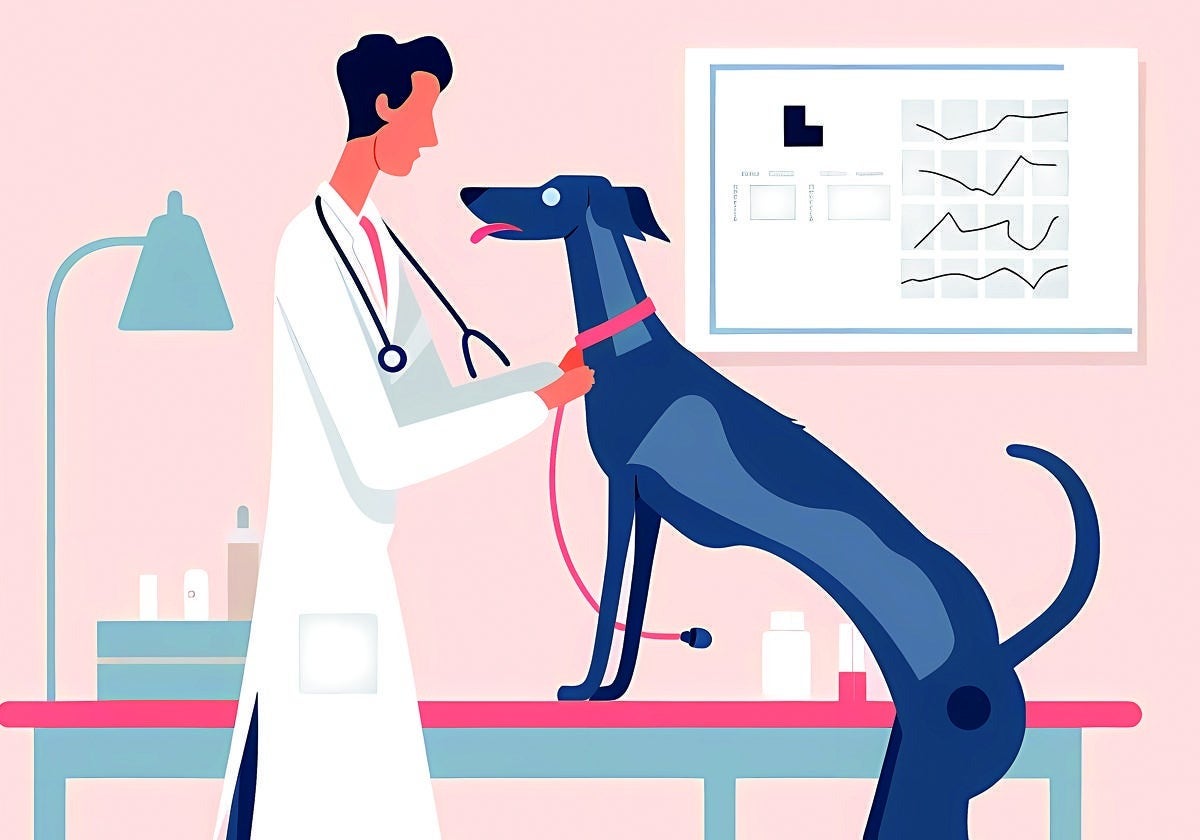Is it worth getting pet insurance for dog and cat breeds prone to health issues?
The need for cover becomes more prominent with age
Pets have become something like family members for people: they offer their unconditional affection, so they deserve all the care they can get. This includes visits to the vet, whether for vaccinations or routine check-ups. The private nature of veterinary services in Spain has prompted the emergence of numerous insurers in recent years. But many are left wondering whether paying a monthly fee is really necessary and worth it. Let's break it down.
The average cost per year for vaccinations is usually around 60 euros, followed by 80 euros for any X-ray or 100 euros for the most complete analyses. "The average cost is difficult to calculate, as it depends a lot on the age of the animal," says Dr Vanessa Carballés from Hospital Gattos (Madrid). "If a pet has 1 or 2 check-ups a year, with blood tests and ultrasound, for example, the price range can be between 400 and 800 euros."
Surgical interventions, orthopaedic surgeries or oncological treatments are a different matter and they could cost between 1,000 and 3,000 euros. In these cases, pet insurance generally only requires owners to pay a sum of between 10% and 20%, depending on the type of policy they have.
The coverage varies enormously, depending on the monthly payment. Those who opt for the cheapest options (around ten euros) will only be covered in the case of accidents and emergency consultations, while the most comprehensive ones (around 40 euros) include hospitalisation, telephone assistance, legal advice in the event of harm to third parties (if our dog bites someone, for example), euthanasia and cremation. These insurances even cover the cost of pet hotel if, for example, we have to be somewhere and there is nobody else to take care of our pet. To make the annual calculations: the cheapest insurance comes at 120 euros per year, while the expensive one comes at around 500 euros.
What does this mean? Well, those who rarely visit the vet, especially when the dog or cat is still young, will not save up a lot with an insurance. But wouldn't it be wise to plan ahead for the illnesses they're likely to suffer later on? Absolutely. Just like with health insurance for humans, most providers will raise objections (or even cancel the contract outright) if they detect that we're requesting coverage for a condition that was previously diagnosed.
An important thing to note is that insurers don't usually cover congenital ailments, deworming or sterilisation. Another thing to keep in mind is that they might refuse to sign a contract with the owner or only offer the most basic package if the pet is already seven or eight years old.
Other issues to consider are the waiting period for the insurance to become active (between 15 and 30 days as a rule, during which the pet will not be covered); and the payment formalities contemplated by each company. With regard to the latter, Dr Carlos Guitérrez from the YouTube channel 'Mascotas y Familias Felices' says: "When we have an emergency, some insurers force us to pay the vet's bill out of pocket and then reimburse us in full or in part (if they consider the expense to be insurable). This clashes with many people's main motivation for taking out insurance: that unforeseen events of this kind will not catch them off-guard, unable to meet the expense. Many clients encounter this unpleasant surprise and false sense of security."
It is important to check if our pet is more prone to certain diseases. For example, German shepherds and chihuahuas tend to suffer more from joint problems; shar peis are prone to skin diseases; and French bulldogs to respiratory problems. When it comes to cats, ragdolls are predisposed to kidney problems; sphinxes suffer more allergies; persians are brachycephalic (a malformation of the skull that affects the respiratory system) and Maine Coons often suffer from joint pain. In cases like these, taking out health insurance is the most advisable thing to do, as owners know that they might need to visit the vet regularly from the start.
Other options
As an alternative to pet health insurance, Gutiérrez recommends putting aside some money every month, which could then be used in case there is an issue, without having to pay an insurance company. That way, owners will have resources for larger expenses, which they will have been accummulating since their pet's early years, when the animal gets older.
On the other hand, Carballés says that most clinics also offer health plans. "In our clinic, we have three plans depending on the age of the cat. Each one includes a package of tests that are cheaper than without the plan, and the advantage is that all consultations are free for one year (including holidays and weekends). In addition, tests that need to be done outside of the plan are also discounted."
Liability insurance
In Spain, since 2023, the Animal Welfare Act makes it compulsory to take out civil liability insurance for all dog breeds. It costs between 25 and 50 euros per year (sometimes included in the household insurance cover) and should not be mistaken for the aforementioned health insurance, as they are different things.

